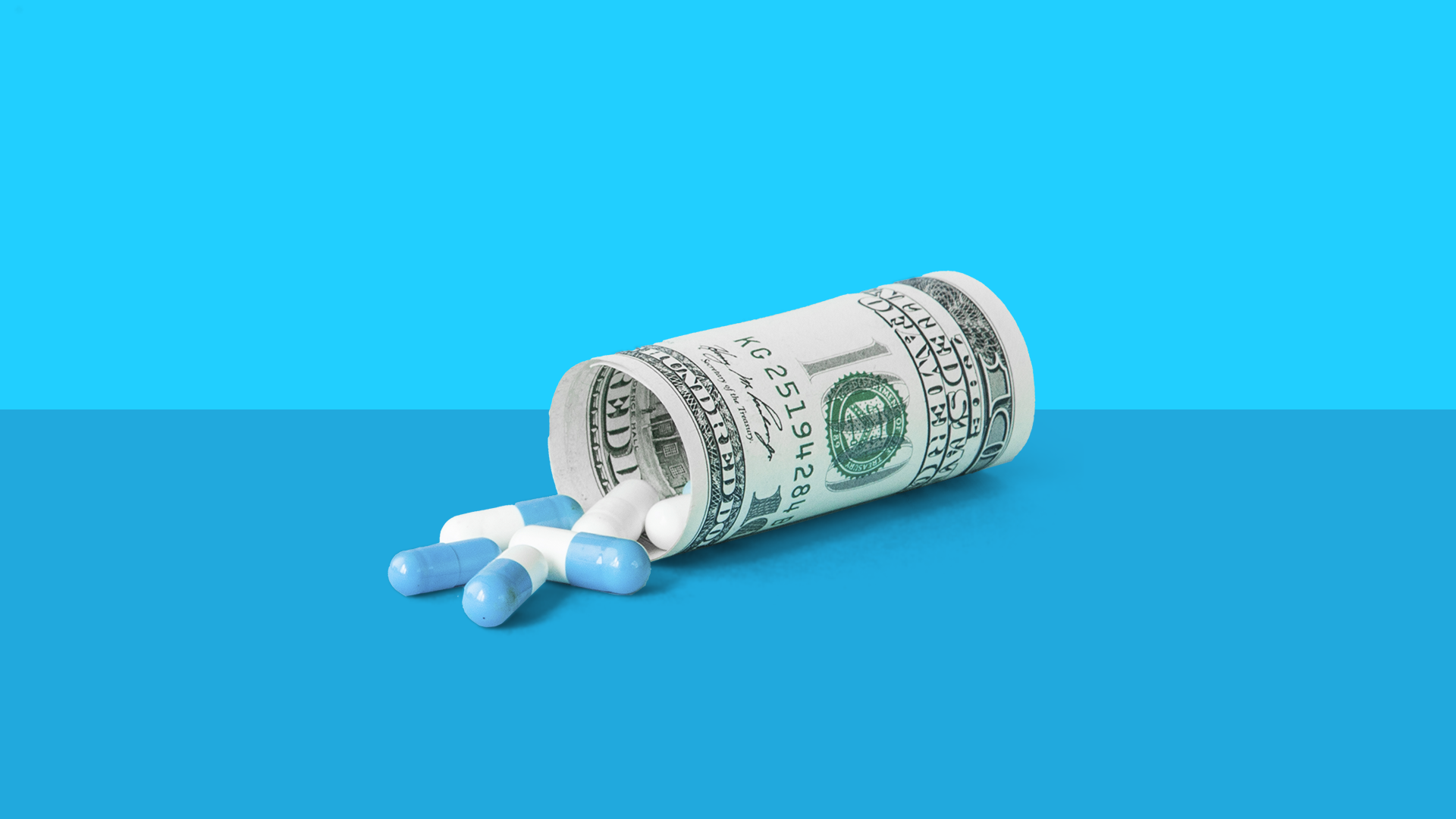Prescription drug prices are one of the biggest financial burdens for Americans and a major point of political contention. The soaring prices of lifesaving medications force many Americans to ration supply, skip dosages, switch to less effective alternatives, or stop their treatment entirely. Although companies like GoodRx, Cost Plus Drugs, Amazon Pharmacy, and others provide alternatives to the traditional insurance-pharmacy-patient chain, they are insufficient at addressing the underlying contentions that enable drug manufacturers to increase prices without a maximum limit, and the system continues to increasingly harm those with complex medical conditions—the same people the system pledges to protect and support the most.
Under the traditional US prescription system, a doctor sends a script to a pharmacy and the patient goes to the pharmacy to pick up their medication. The drug manufacturer sells the medication in bulk to a wholesaler at a list price, which is almost always not publicly disclosed, and the wholesaler will resell and distribute the medication to pharmacies for a profit. Due to the lack of transparency in list pricing, wholesalers have more freedom to markup prescription drug prices beyond the typical profit margins of other goods. Depending on their insurance plan (co-insurance, deductible, copay, Medi-Cal, health savings account, other government assistance, etc.), the patient pays a certain portion of the pharmacy price while the rest is billed to their insurance company. A hidden middleman, the Pharmacy Benefit Manager (PBM), negotiates prices and rebates between the drug manufacturers and insurance companies.
Drug makers pay insurance companies a rebate to boost the listing and coverage of their medication in the formulary– the list of medications that the insurance covers, ordered by coverage of costs. PBM’s pocket a percentage of the rebate. In other words, medications that are higher on the formulary are cheaper for the patient because a larger proportion of the cost is covered by the insurance company. The drug makers are incentivized to pay rebates to advance their position on formularies because patients are more inclined to use cost-effective drugs, thereby, increasing the sales for that specific manufacturer. From a drugmaker’s perspective, a rebate is an investment that will always have a high ROI, contingent that revenue in sales outweighs the costs of the rebates.
To pay rebates, drug makers may increase the listing price of their drug. The effect of these higher prices does not linearly affect consumers. Those with strong insurance may pay the exact same deductible or copay, while others may pay the same percentage of the drug. Although the cost of that percentage may increase, it is rarely drastic. Patients without insurance are left extremely vulnerable and forced to pay the higher wholesaler cost. Considering they pocket a percentage of the rebate, PBM’s are incentivized to push higher rebates over time, driving a viciously greedy cycle of exponentially increasing drug prices to cover overpriced rebates, higher premiums, deductibles, and copays for patients with insurance to cover the price of drugs, exorbitant prices for patients without insurance.
Due to major advancements in drug development and biotechnology, the production and manufacturing costs of most drugs are extremely low. Manufacturers are chasing stronger profit margins to yield glowing ROI. The development of drugs is extremely expensive and time-consuming, regularly accumulating hundreds of millions of dollars in costs across several years, if not, decades. 90% of new drugs do not reach the consumer market due to failures in clinical trials, FDA approval, mergers & acquisitions, hostile takeovers, etc. To stay afloat, keep investors happy, and people employed, drug manufacturers prioritize profit by patenting their formulas– creating a “brand name” drug. For example, Lipitor, the most popular statin, is the “brand name” for Atorvastatin. Metformin, a key Type 2 diabetes medication, is the “brand name” for Glucophage.
According to the FDA, drug manufacturers can hold patents over medications for 20 years, meaning, the medication cannot be manufactured by alternative drugmakers as a “generic version.” This government-assisted monopolization allows drugmakers to maximize market dominance for certain treatments and allow them to recuperate costs as much as possible. After 20 years, patients with common healthcare complications can choose between different drug manufacturers—the “brand name” or “generic version.” “Generic versions” are often much cheaper because they simply have to recreate the chemical formula. The testing, validation, and effectiveness measured by clinical trials are conducted by the original manufacturer to legitimize the drug, so alternative drug makers only need profit margins to cover the production cost—not the production and research & development costs.
Patients with complex medical complications, such as cancer, solid organ transplants, etc., can only take the brand name of a drug. Generic versions do not—or cannot—exist due to the drug patenting system. Other times, alternative drugmakers do not exist. Only one company has the resources to invest in research & development for treatments of a particular disease due to the narrow consumer market and a limited number of eligible patients. As such, patients with rare, complicated, or interrelated medical conditions have limited options for effective prescriptions/treatments and, therefore, cannot avoid high-cost prescription drugs.
Companies like GoodRx, Cost Plus Drugs, and Amazon Pharmacy aim to disrupt and reverse the exploitative nature of prescription drug prices. GoodRx allows easy comparison of drug prices at popular retail pharmacies like CVS, Walgreens, Rite-Aid, and Costco. Amazon Pharmacy ships medications in bulk directly to consumers at a discount rate with extra deals for Prime members. Cost Plus Drugs publicly discloses the wholesale costs of each drug, the 15% profit markup, the $5 delivery fee, and the $5 pharmacy fee. This astronomically decreases costs for patients– some may save money by purchasing drugs out-of-pocket from these retailers regardless of insurance status. These companies aim to serve as wholesalers and pharmacies by buying in bulk and selling at a cheaper price, and this structure eliminates the PBMs that often initiate and amplify cycles to increase drug prices.
To scale their business and help as many folks as fast as possible, most drugs on these websites are generic, meaning, they are commonly used, the monopolization-enabling patent has expired, and are already relatively cheap. Although the availability of these drugs at a price that is even cheaper than usual is extremely beneficial and signals that the industry is aiming to move in a reasonable direction, it fails to serve patients who are experiencing the brunt of financial burdens imposed by specialty prescription drug prices. Partnerships with brand-name drugs and offering competitive rates for treatments for which there are no alternatives are necessary to equitably reduce the immense financial burden of prescription medications.
For any healthcare plan—regardless of whether it is Medi-Cal, Universal Health Care, private insurance, or any other permutation—we must address this parasitic exploitative cycle that encourages profiteering off of vulnerable patients. Which component of the system is most responsible for rewarding militant financial strategy in healthcare? Is it the IPO/stakeholder-focused nature of healthcare insurance and Big Pharma companies? The IP rights that encourage a monopoly over lifesaving drugs? Or the lack of policies to more strictly regulate price gouging and margins of profiteering on drugs? What does the financial termination of economically unshielded folks indicate as a reflection of our society?
Featured Image Source: SingleCare






Comments are closed.